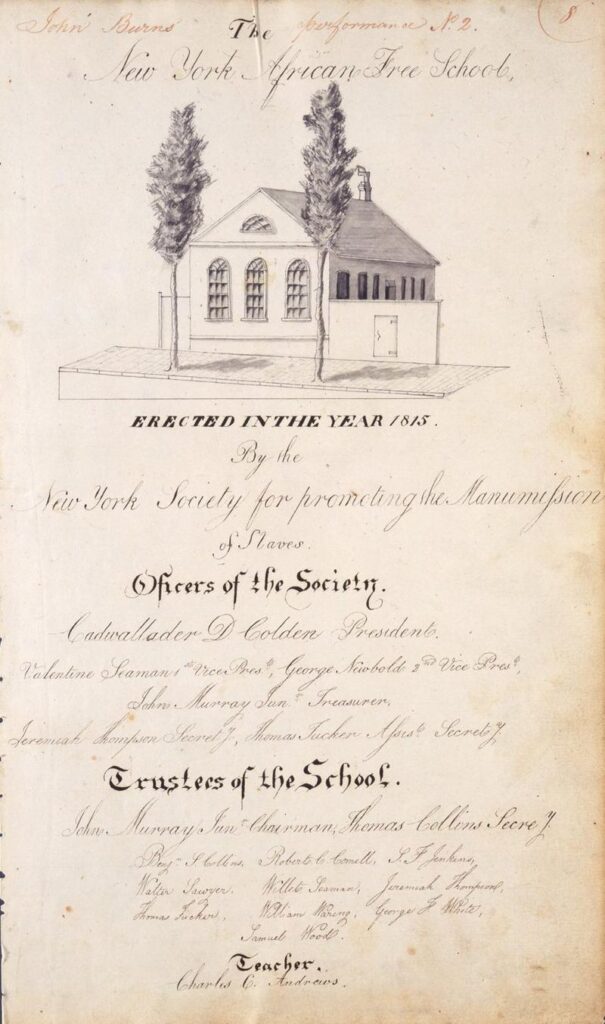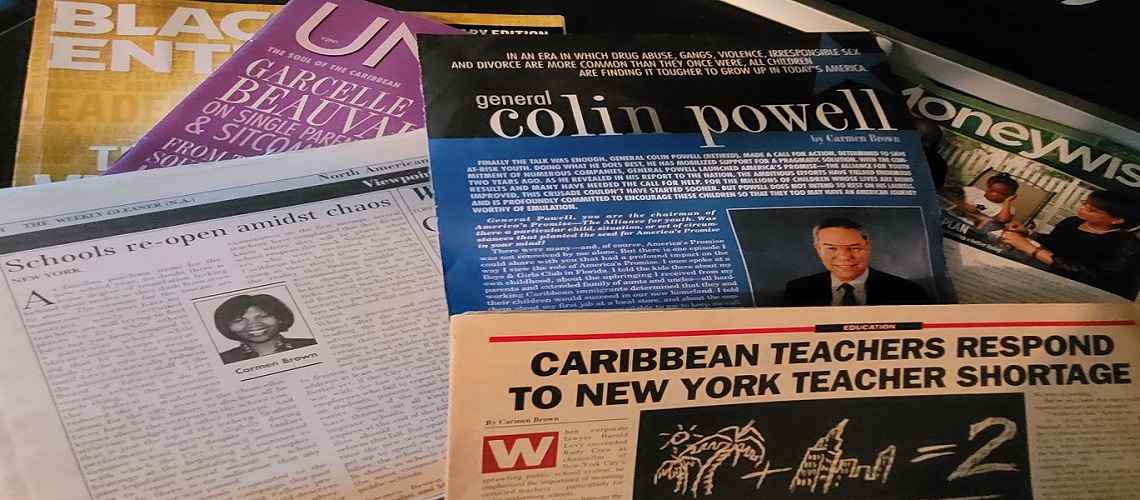
Harlem theater company
Harlem theater company boosts uptown arts scene
TALK about going off-off-off-Broadway!
Theater company Mama Foundation for the Arts is trying to build up its version of the Great White Way uptown by partnering with Harlem merchants.
Founder and executive director Vy Higginsen has brokered deals with neighboring businesses to provide her patrons with sizeable discounts for nearby shows, food and even parking.
“Part of our mission is to restore Harlem to its prominence as an entertainment engine,” she said. “We know arts and food, music and food go together.”
The theater company provides vocal training and oversees auditions for shows such as “Alive!,” “Sing Harlem Sing” and “We Are,” which entertain yearly from October to December.
Patrons have the opportunity to enjoy a full day of fun in the iconic artistic mecca, beginning with an off-Broadway show and finishing the evening with a plethora of food choices that include Harlem stalwarts such as Sylvia’s and the ever-hip Corner Social and soul food favorite Jacob Restaurant.
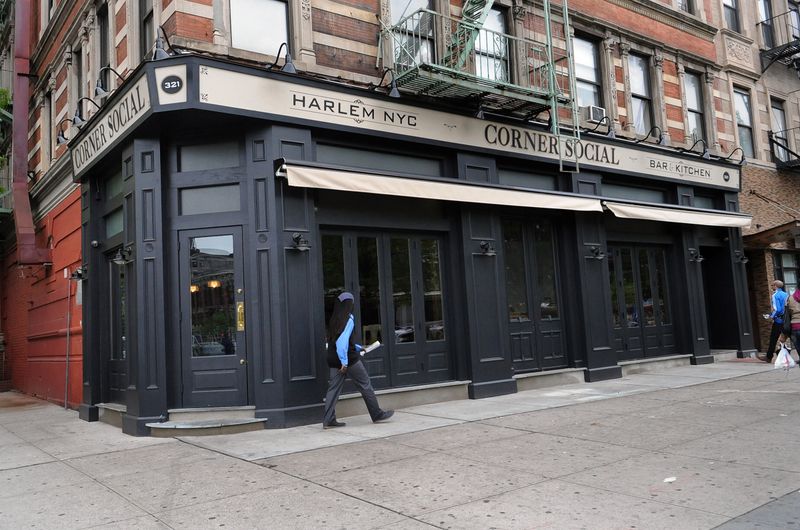
“We have made alliances with other businesses here so they can thrive, and there are others that will come on board,” Higginsen said.
It’ll also be music to the ears of drivers as she’s worked out a partnership with Pro Park, a garage on W. 127th St.
“As long as the customers show us the stub from their program, they get a discount,” said Pro Park’s account manager Moses Suazo.
“Parking is $18, but they pay $12,” he added.
Higginsen is constantly on the move, preparing for her company’s Oct. 4 off-Broadway season opener at Harlem’s Dempsey Theater.
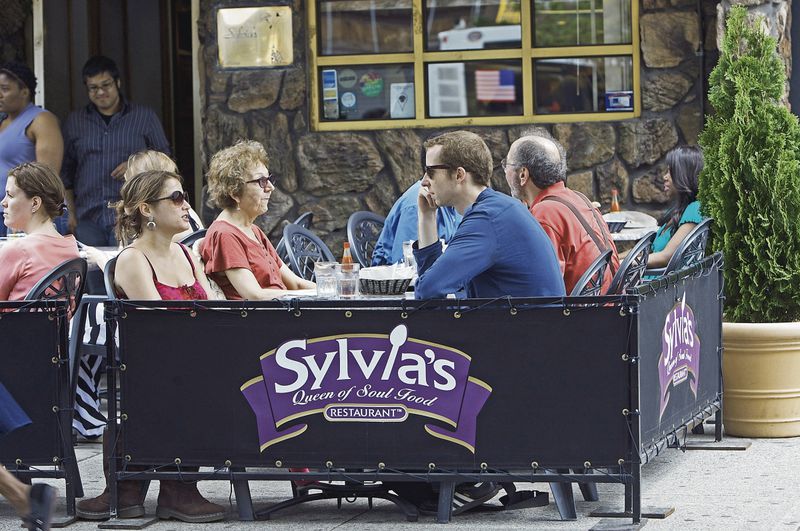
As she continues to provide affordable forms of entertainment to Harlem, she hopes to see her model of business partnership replicated elsewhere.
“We firmly believe in the power of music and arts as the heart of the community because a community without the arts is a half-dead community,” she said.
The Mama Foundation for the Arts is located at 149 W. 126th St.
For more information, call (212) 280-1045.
- Location: New York Daily News
- Year Of Complited: SEP 09, 2014
Massive new Bronx mall
Massive new Bronx mall lures biz away from nearby outdoor plaza, merchants gripe
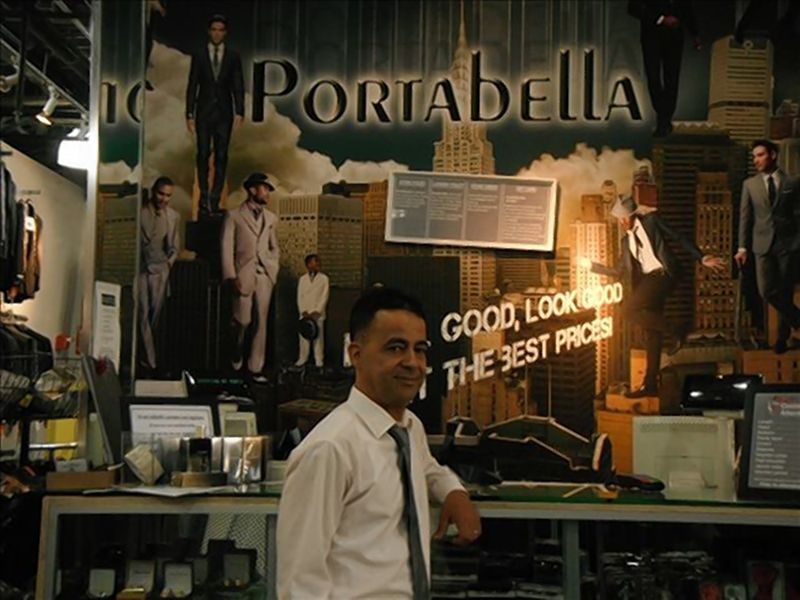
The Bronx’s dreamy new mall — the first indoor, suburban-style mall built in New York City in 40 years — is causing nightmares for some longstanding store owners.
Shoppers have been flocking to the Mall at Bay Plaza forsaking the businesses that operate in the outdoor shopping center at the plaza’s eastern tip.
“They are killing us,” said Kada Boudjeltia, the manager of Portabella, a menswear boutique. “There’s no traffic. This section of the mall is dead. We have gone from 40 customers per day, spending $3,000, to making $1,000 yesterday. We made $10,000 all of last week.”
He said he cannot meet his payroll, and workers have begun to quit.

A few doors down, Maria Collado, manager of Easy Pickins, said back-to-school sales were down 13% and business at the shoe store was down 20% overall.
“We hardly have any customers since the mall opened,” she said.
Collado and others lamented the relocation of the Bx12 bus stop back to its original location, closer to the indoor mall.
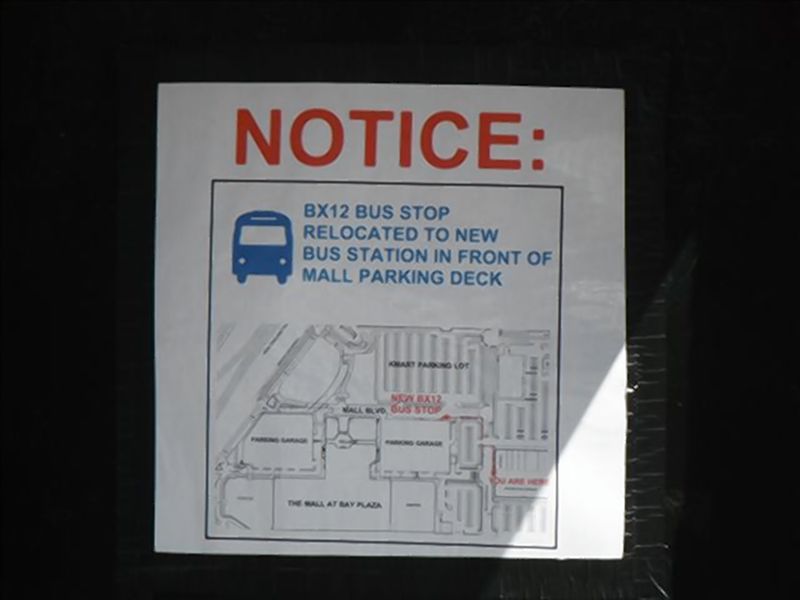
“The bus used to drop people off at the corner at Applebee’s and they would walk around,” she said. “But now, the buses all go directly to the indoor mall. This is hurting our business.”
Sam Shalem, the chairman and CEO of Prestige Properties and Development, which runs Bay Plaza, sees things differently.
“I walk every day between the stores and the traffic is high,” he said. “There are lines.
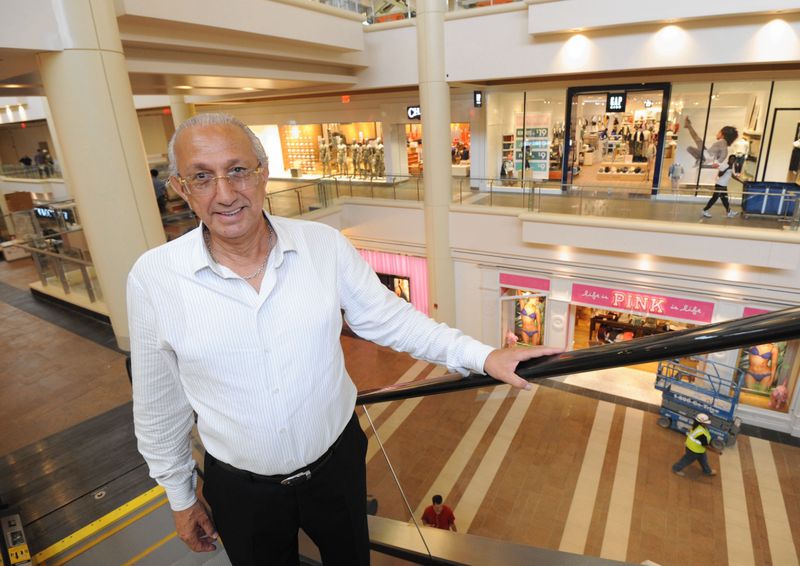
“We just invested $5 million in the older center,” he added. “We own both of them; we are not going to let one of them suffer.”
Shalem said the late-August relocation of the bus stop to a new terminal near the mall was planned all along, and an MTA spokesman backed him up.
“The Bx12 route was previously rerouted on a temporary basis during the expansion of the mall at Bay Plaza,” the spokesman, Kevin Ortiz, said in a statement.
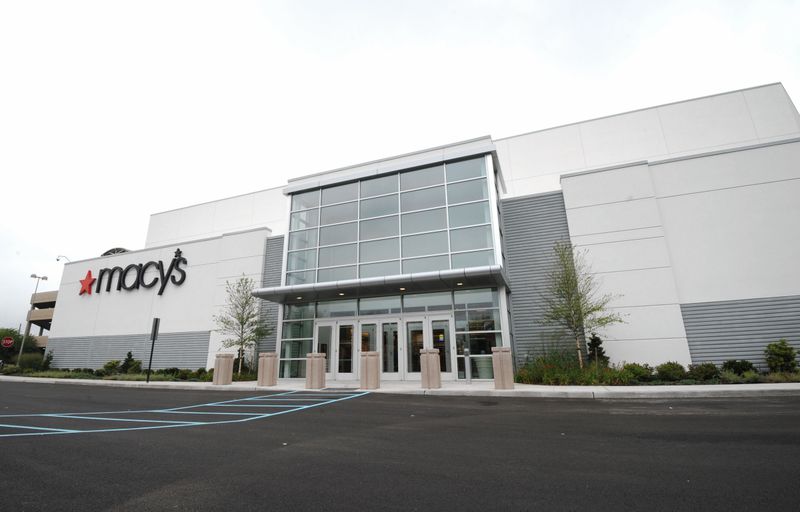
The change, however, is creating a hardship for the businesses that occupy the older shopping center.
“Every day I have my workers coming to me to say they are afraid to walk so far to catch the bus when they leave work at 9:30 or 10 at night,” said Mohammed Khawaja, the manager of Jimmy Jazz.
But another change seems unlikely.
“It sounds like these business owners were not aware that the Bx12 was on a temporary reroute,” Ortiz said. “We have not received any complaints from anyone up to this point.”
Nobody had a negative word to say inside the mall, where Macy’s and H&M opened gleaming new outlets last month. Business has been robust, and customers have been crowing.
“The new mall is nice and has lots of stores,” said Tamera Joseph, 15, who was browsing with her cousin, Alexis Joseph, 14. “I’m not going back to the outdoor mall.”
- Location: New York Daily News
- Year Of Complited: SEP 10, 2014
BLACK HISTORY MONTH 2016
BLACK HISTORY MONTH 2016: Authors with Daily News connections celebrate black heroes who shattered racial boundaries

A cadre of authors with Daily News connections — current staffers, former employees and longtime freelance contributors — are offering timely tomes for Black History Month, and some previously published works that are great reading year-round.
“Firefight: The Century-Long Battle to Integrate New York’s Bravest,” by Ginger Adams Otis
“Firefight” tells the story of the efforts by the Vulcan Society, a group of black firefighters, and their determination to make New York City’s Fire Department more inclusive and representative of the city. The book centers on FDNY Capt. Paul Washington, and includes the stories of many firefighters, including Wesley Williams, who joined the FDNY in 1919 when the department was 100% white and mostly Irish.
TWO NYC LIBRARIES ARE DEVOTED TO BLACK HISTORY MONTH
“Firefight” includes an examination of the black firefighters group’s landmark $98 million racism lawsuit settlement won from the city. (St. Martin’s Press)
“Forgotten: The Untold Story of D-Day’s Black Heroes, at Home and at War,” by Linda Herveiux
Linda Herveiux outlines the courageous, valiant efforts of the all-black World War II battalion landed in Normandy on the D-Day mission. The author vividly describes how the 320th Barrage Balloon Battalion stormed the beaches of France on June 6, 1944, and the blatant racism of America’s Jim Crow laws, which did not allow their important contributions to be acknowledged.
SPECIAL REPORT: UNSUNG HEROES OF CIVIL RIGHTS – PROFILES OF LITTLE KNOWN PEOPLE WHO HELPED WRITE INJUSTICES
She also credits President Obama for presenting the long-overlooked heroes with the Medal of Honor. (Harper)
“One Righteous Man: Samuel Battle and the Shattering of the Color Line in New York” by Arthur Browne
Pulitzer Prize-winner Arthur Browne deftly shows that the NYPD and African-Americans have a long, tense, fractured, simmering history. His book describes the long roots of the dysfunctional relationship while carefully revealing the impact made by Samuel Battle, the first black officer to join the NYPD in 1911. The history-making police officer had hired literary giant Langston Hughes to write his biography in 1949, according to Battle’s grandson, who shared information with Browne. (Beacon Press)
“Discovering Black America: From The Age of Exploration to The Twenty-First Century” by Linda Tarrant Reid
In her historical tome, Linda Tarrant-Reid traces the roots of African-Americans from slavery to the present, using information gleaned from six years of research. One important message Tarrant-Reid wants to convey in “Discovering Black America” is this: “I want young African-American students and people of color to understand that we were a part of the foundation of this country.” (Harry N. Abrams)
“Witnessing Brother Malcolm X, The Master Teacher,” by A. Peter Bailey
Veteran journalist A. Peter Bailey — a founding member of Malcolm X’s Organization of Afro-American Unity — wrote this self-published memoir to share the cultural and economic thrust of Malcolm X’s last year of life, describing the activist’s efforts to attract non-Muslims to the movement. (Lumina Press)
“The Diary of Malcolm X: El-Hajj Malik El-Shabazz, 1964” edited by Herb Boyd and llyasah Al-Shabazz
Boyd, who will teach a course, “The Life and Legacy of Malcolm X,” at City College this spring, said that despite enduring a year-and-a-half-long court battle with some of Malcolm X’s children to edit and publish Malcolm X’s diary, he is pleased that the late leader’s daughter, llyasah Al-Shabazz, said, “Let’s do it.” The diary fills out what he did not say in the autobiography (“The Autobiography of Malcolm X” as told to Alex Haley.), Boyd said. (Third World Press, Kindle Edition and hardcover)
“Seconds Out” by Jay Mwamba
Showcasing impeccable writing style that engages readers, immigrant Jay Mwamba weaves an intriguing tale in “Seconds Out.” Drawing from inside knowledge gleaned from his father’s experiences as a diplomat, Mwamba juxtaposes his political sensibilities with his love of boxing. “Seconds Out” tells the tale of boxing phenomenon Sonny and his brother Al, the sacrifices Sonny makes on his way to success. (Author House)
“Gowanus: A Love Story,” by Clem Richardson
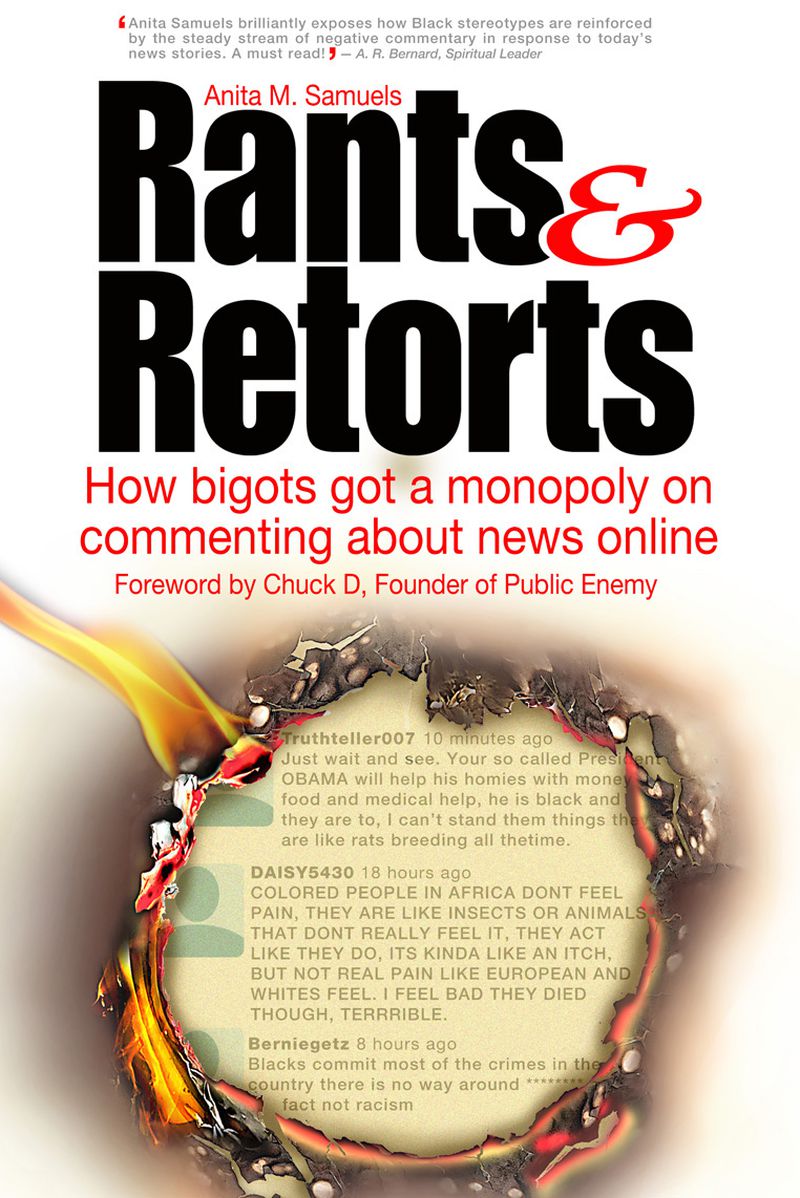
Richardson’s book is a suspense thriller set in Brooklyn — a chance encounter between an unusual man and a woman that forever changes their lives. Surprising twists sprinkled throughout the book engage the reader on various levels. Richardson said sought to expand his writing skills in new avenues by creating the novel, which was edited by his wife, Claudette Leandro. (Kindle, $9.99)
“Rants and Retorts: How Bigots Got A Monopoly on Commenting About News Online” by Anita Samuels
Anita Samuels’ book was inspired by an online article she read about singer Alicia Keys, which resulted in a spate of comments — some of which the author-to-be felt were racist.
BLACK HISTORY MONTH CARTOON WAS INSPIRATION FOR BETTY BOOP
Interviewing psychologists and other professionals, Samuels discovered that readers can suffer post-traumatic stress disorder from repeatedly reading negative comments. An insightful foreword written by rap legend Chuck D adds an extra dimension to the upcoming book.
- Location: New York Daily News
- Year Of Complited: FEB 11, 2016
Top chef Marcus Samuelsson
Top chef Marcus Samuelsson and uptown eateries team up for Harlem-Havana Music & Cultural Festival
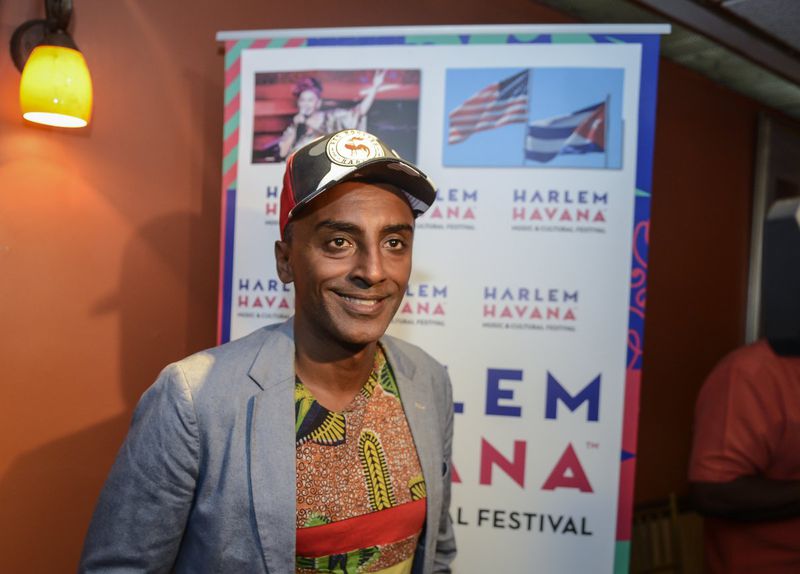
Culinary and musical variety enhance the broad appeal of Harlem Week’s annual festivities.
But this year, zesty Cuban flavor will be unmistakable when the Greater Harlem Chamber of Commerce, famed celebrity chef Marcus Samuelsson and uptown eateries team up for the culinary portion of the inaugural Harlem-Havana Music & Cultural Festival.
Select Harlem restaurants will showcase dishes or have bands perform during Harlem Week as part of the cultural initiative.
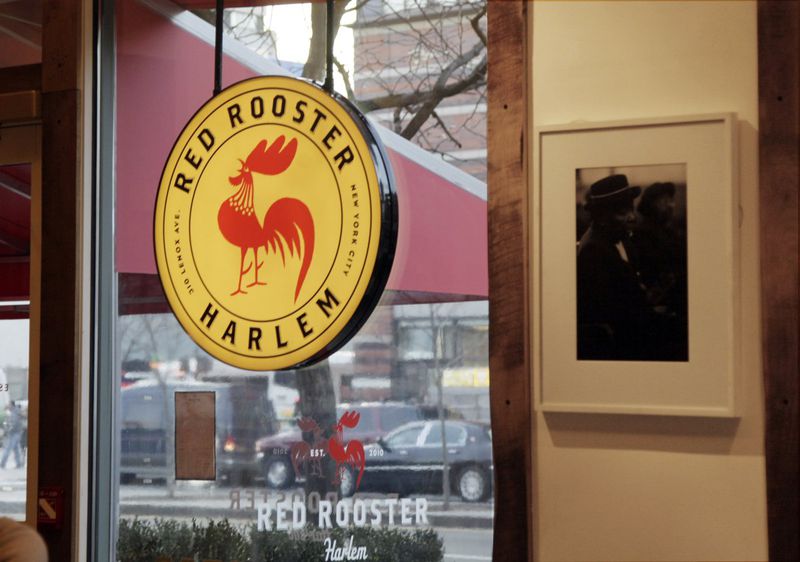
The restaurants are Mountain Bird and Amor Cubano in East Harlem; Samuelsson’s Red Rooster, Ginny’s Supper Club, Streetbird and Sylvia’s in central Harlem; and the 40-plus-year-old Cuban-inspired Floridita Restaurant and Oso in West Harlem, and La Fonda Del Sol restaurant in Midtown Manhattan.
I am a huge fan of the Greater Harlem Chamber of Commerce and a huge fan of Harlem — the neighborhood I live and work in,” said Samuelsson, who has been front and center coordinating the Havana-Harlem festival and its culinary component.
Top chef Marcus Samuelsson and uptown eateries team up for Harlem-Havana Music & Cultural Festival
“Getting to be a part of this great initiative started by the chamber, which builds bridges with Cuba and Havana, is super-exciting,” he said, adding that he’ll be a member of a contingent heading from Harlem to Havana next year as part of the cultural exchange venture.
As connoisseurs eagerly anticipate the diverse culinary delights of the Harlem-Havana Music & Cultural Festival during Harlem Week, each restaurant’s staff will decide what Cuban-inspired dish and cocktail to offer, Samuelsson said.

“The goal of Havana-Harlem is to create a shared cultural experience. When guests dine at restaurants and get a taste of Cuban food and drink, the shared experience will hopefully lead to a greater curiosity for the Cuban culture.”
And understandably, participating restaurateurs are thrilled.
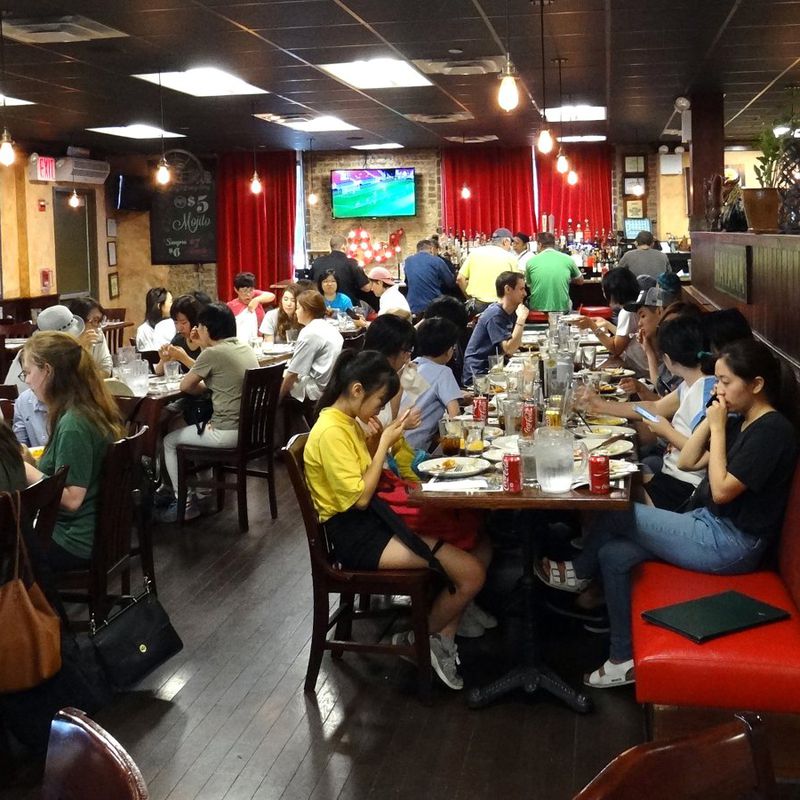
“We have a regular band at our restaurant, and we were asked to have our band play during the festivities,” said Laura Munera, manager at Amor Cubano on Third Ave.
Nodar Mosiashvili and Matthew Trebek — co-owners of Oso, a Mexican restaurant on Amsterdam Ave. — said Cuban-inspired drinks, such as a guava Margarita and the Slaquita, which has grapefruit juice, will be available during Harlem Week in addition to the regular Mexican street food menu.
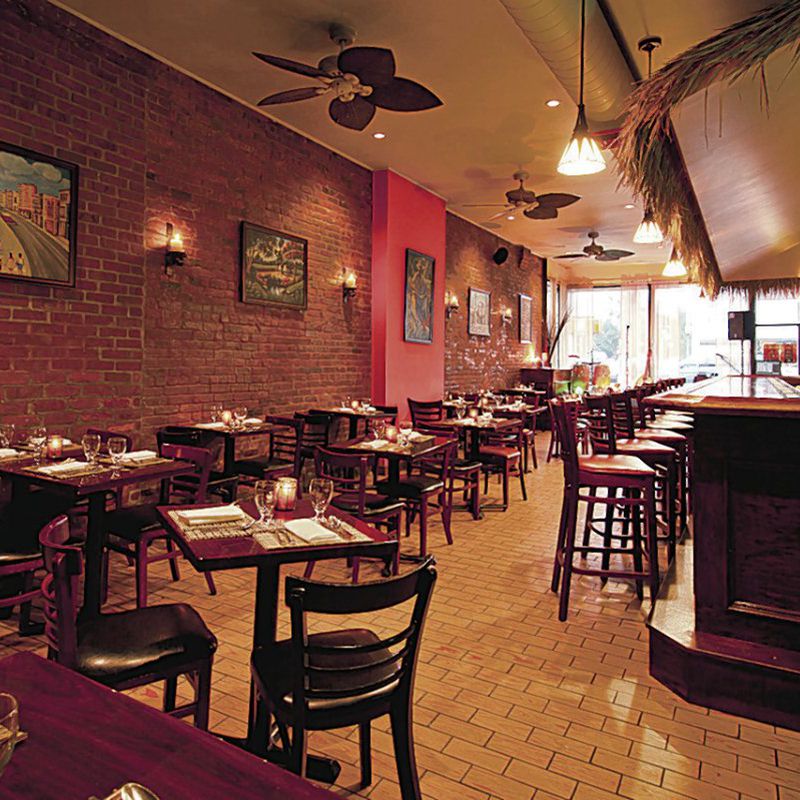
Meanwhile, Ramon Diaz — owner of Harlem’s Floridita, established in 1969 — is deciding what he’ll showcase from the 12th Ave. eatery’s impressive traditional Cuban-influenced menu.
Keiko Tajima, co-owner of French-influenced restaurant Mountain Bird on E. 100th St., is thrilled to be involved in the Havana-Harlem festival.
“I feel very special because we are proud to be in business in Harlem,” she said. “The people in Harlem are very supportive.” Tajima said she is still working on the dishes she will feature during Harlem Week. She said some of her big sellers are “wings, lobster bisque and macaroni and cheese.” Laughing, she said proudly: “We serve good stuff!”

Sylvia’s, the iconic soul food eatery that has attracted heads of state, dignitaries and everyday people, has also signed up for in the Harlem-Havana initiative.
Samuelsson said the festival will cast a long-denied spotlight on the vibrant Cuban culture.
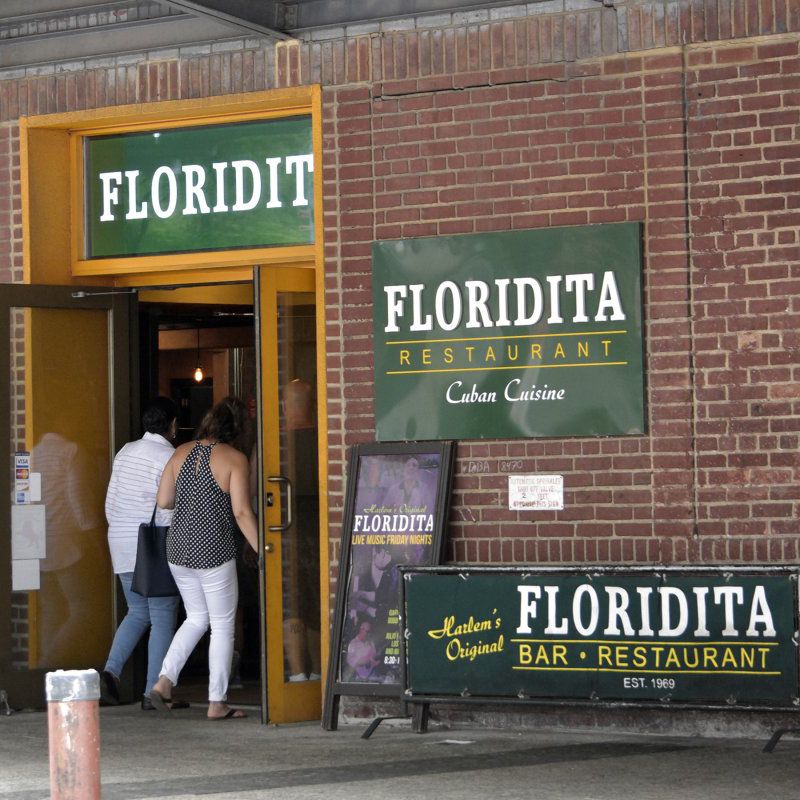
“On a larger scale, it will be amazing to see Cuban culture coming to diverse restaurants in Harlem. It will really allow new audiences to experience and taste the food and spirit of Cuba,” he said. “Of course, I’m also excited about going to Cuba in February.” That’s when the Harlem-Havana Music & Cultural Festival will bring the culture and food of Harlem to Havana.
“I’ve been to Cuba before, and there are so many similarities in terms of the culture and music and food and great people in both places,” Samuelsson said. “It felt like a great opportunity to bring the new audiences to the cultures of Cuba.”
Visit the restaurants participating in the Harlem-Havana Music & Cultural Festival during Harlem Week:
Mountain Bird: 251 E. 110th St. Visit www.tastingsnyc.com/social. Call (212) 744-4422.
Amor Cubano: 2018 Third Ave. Visit www.amorcubanonyc.com. Call (212) 996-1220. Email: info@amorcubanonyc.com.
Sylvia’s: 328 Lenox Ave. Visit www.sylviassoulfood.com. Call (212) 996-0660. Email: info@sylviasrestaurant.com.
Harlem’s Floridita: 2276 12th Ave. Visit www.harlemsfloridita.com. Call (212)662-0090. Email: info@harlemsfloridita.com.
Oso: 1618 Amsterdam Ave. Visit www.osoharlem.com. Call (646) 858-3139. Email: hola@osoharlem.com.
Red Rooster: 310 Malcolm X Blvd. Visit www.redroosterharlem.com. Call (212) 792-9001. Email: info@redroosterharlem.com.
Streetbird: 2149 Frederick Douglass Blvd. Visit www.streetbirdnyc.com. Call (212) 206-2557. Email: info@streetbirdnyc.com.
Ginny’s Supper Club: 310 Malcolm X Blvd. Visit www.ginnyssupperclub.com. Call (212) 421-3821. Email: info@ginnyssupperclub.com.
La Fonda Del Sol restaurant: 200 Park Avenue (Metlife Building).Visit www.lafondadelsolnyc.com. Call (212) 867-6767.
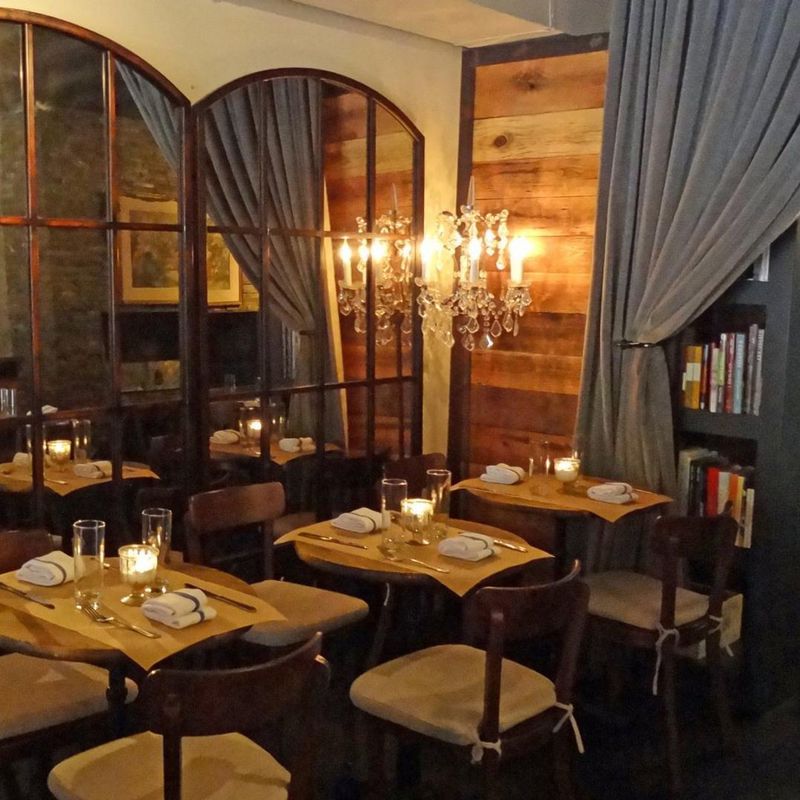
- Location: New York Daily News
- Year Of Complited: AUG 13, 2016
CARIBBEAN CARNIVAL 2016
CARIBBEAN CARNIVAL 2016: Reggae returns to Brooklyn Labor Day festival with Third World, Luciano and more
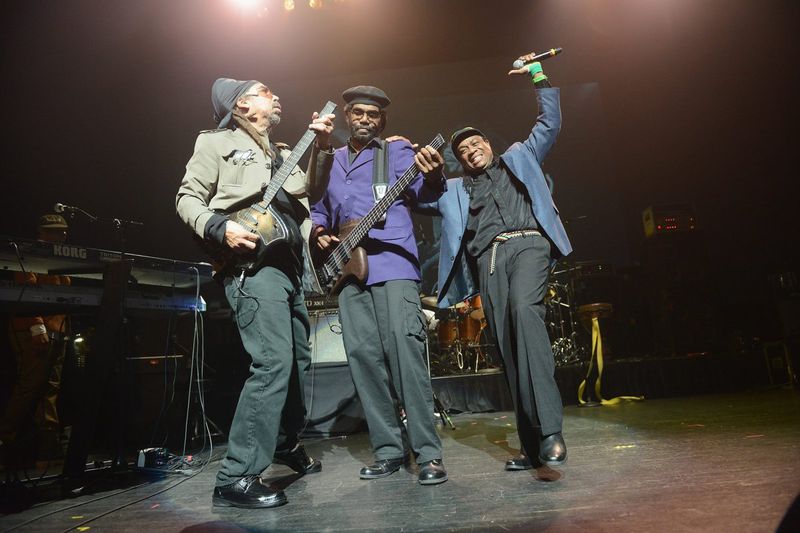
Reggae music will make a triumphant return to the New York Caribbean Carnival, kicking off five days of Caribbean revelry with the “Reggae Unda Di Stars” concert on Sept. 1.
The opening-night show, which will be held on the grounds of the Brooklyn Museum starting at 7 p.m., will feature a solid lineup of performers to delight passionate fans.
Legendary band Third World – known for tunes such as “Try Jah Love” and the megahit and global anthem “Now That We Found Love” – will headline the show, which also will star Luciano. Known respectfully as The Messenger, his repertoire includes “In This Together,” “Sweep Over My Soul” and “It’s Me Again Jah.”
Christopher Martin, Romain Virgo, Ameena Caesar, Dajah, Statement Band and DJ Orie will round out the list of performers.
The return of reggae to WIADCA festivities gets two thumbs-up from iconic radio personalities Pat McKay and Dahved Levy, who will host the show.
McKay and Levy hail from Jamaica and Barbados, respectively.
McKay, director of programming for reggae and gospel at Sirius XM Satellite Radio and host of “The Joint” reggae show on Sirius XM, previously organized reggae performances at the Brooklyn Caribbean carnival.
“I’m just happy to be there, having organized five reggae nights in the past,” said McKay, who did not organize this year’s reggae night but is pleased to have the “privilege of being included in something international that many people come to New York for.”
Reminiscing about the importance of a night devoted to reggae, she said, “The WIADCA is to be credited, because they have always tried to be inclusive. It’s magnanimous of them to include reggae.”
She said her involvement with the carnival spans decades.
“I had the honor of working with the founder, Carlos Lezama. WIADCA has a proud legacy, bought with blood, sweat and tears despite the naysayers,” explained McKay, who said she enjoys reggae night because she remembers seeing the “joy on people’s faces” in the past.
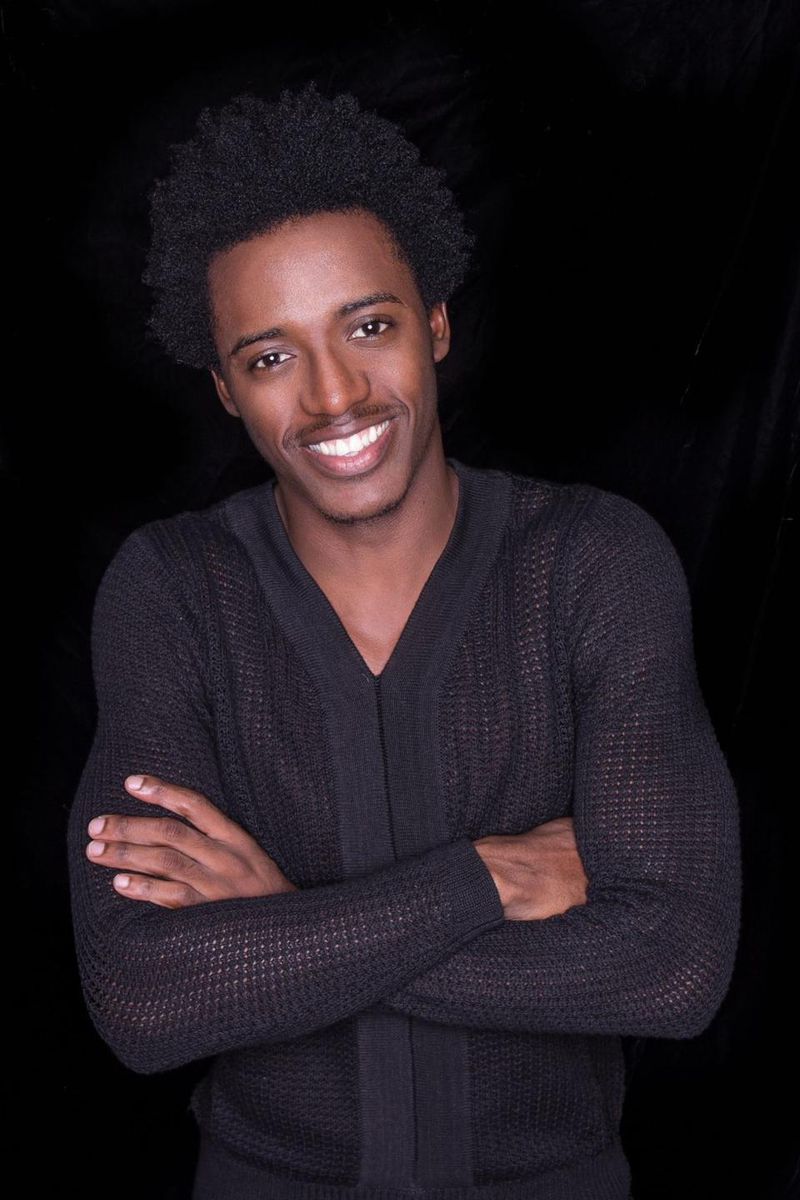
Meanwhile, Levy says “there’s nothing wrong with a reggae night,” in the context of the carnival. “It’s showing the total completion of the Caribbean. WIADCA covers the whole of the Caribbean.”
Levy, a radio pioneer, hosts the “Caribbean Fever” show on WBLS radio (107.5-FM), and coined the popular catchphrase “rockin’ you, rockin’ you.”
Levy added that the reggae night lineup is good and will create excitement.
“Third World is going to attract a wide array of people from New York and New Jersey. Very few artists from the Caribbean have crossed over to pop, and Third World has done that,” he said. “And then there’s Luciano, The Messenger.”
Levy said all the performers will deliver spectacular shows despite personal losses. Third World’s well-known lead singer, Bunny Rugs, died in 2014, and Luciano’s son was killed this year.
When asked about other artists for future Brooklyn carnival reggae shows, Levy mentioned Shabba Ranks, Super Cat and Sizzla.
“Sizzla is returning to New York for the first time in eight years,” said Levy. “Obviously, if Sizzla was available, I would love to see him. Sizzla is a friend of mine.”
For tickets to the “Reggae Unda Di Stars” concert and other carnival events, visit http://bit.ly/2016carnivaltickets, and go to www.wiadca.com for more information.
- Location: New York Daily News
- Year Of Complited: SEP 01, 2016
Dedicated soldiers helped
Dedicated soldiers helped break U.S. Army color barrier
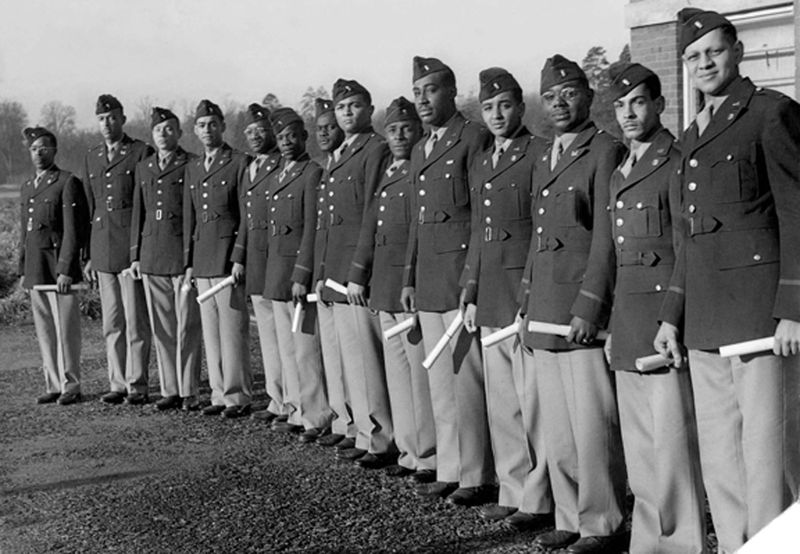
Twice a month, U.S. Army veteran William Dyson Sr. would drive from Harlem to the Fort Hamilton Army post in Brooklyn to buy food and household supplies from stores open only to current and former military personnel. This was more than 50 years ago, but his grandson, Reggie Lewis, has vivid memories of those Saturday shopping trips — particularly their reception at the entrance to the military base.
“He would present his ID and the soldier would look, and after that snap to attention with the salute,” Lewis recalled. “My grandfather would be in the car, [left] hand still on the wheel. His other hand would go up and salute the soldier.”
Lewis remembers all sorts of details about the outings, such as his grandfather’s “blue-on-blue Buick Wildcat with bucket seats and a console for the shifter.” But the salute from soldiers at the Army base’s main gate was always a high point for Lewis.
“To see this always had an impact,” he said. “It was only because of his rank — the rank of captain. It superseded anything racial. It was [showing] respect for the rank he had achieved. Whatever soldier was at the gate, that was the response he got — always.”
But when Dyson became an officer during WWII, it was during a time when blacks didn’t get equal treatment or equal respect.
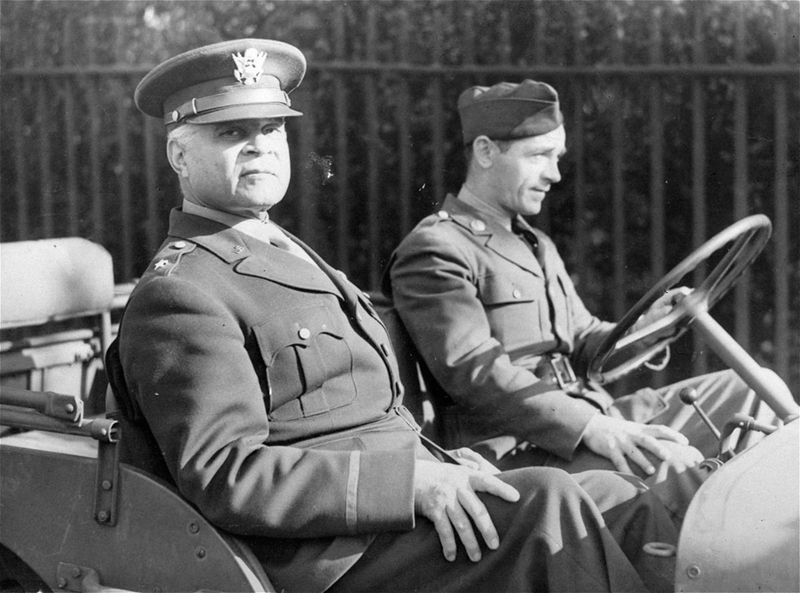
In all of America’s wars, black soldiers’ devotion to duty and to country were strong in the U.S. military, which had long been split along racial lines with segregated white-only and black-only units. So for generations, in addition to enemy troops, black military personnel had to fight racial prejudice from some white soldiers and officers.
The book “Colin Powell: Soldier and Statesman,” by Warren Brown and Heather Lehr Wagner, notes, “Of the 370,000 blacks who served in the military during World War I, only five held officers’ commissions in the Army; none held commission in the Air Corps. It was not until 1940, when the United States was preparing to enter World War II, that a few of the barriers began to crumble.”
The crumbling started when Benjamin O. Davis Sr. was named a brigadier general in 1940, just before America entered WWII with its segregated army.
“Moreover, Benjamin O. Davis Sr. broke new ground when he was named the nation’s first black general. The army, however, refused to renounce its policy of segregation or stop relegating black recruits to service units,” the book reveals.
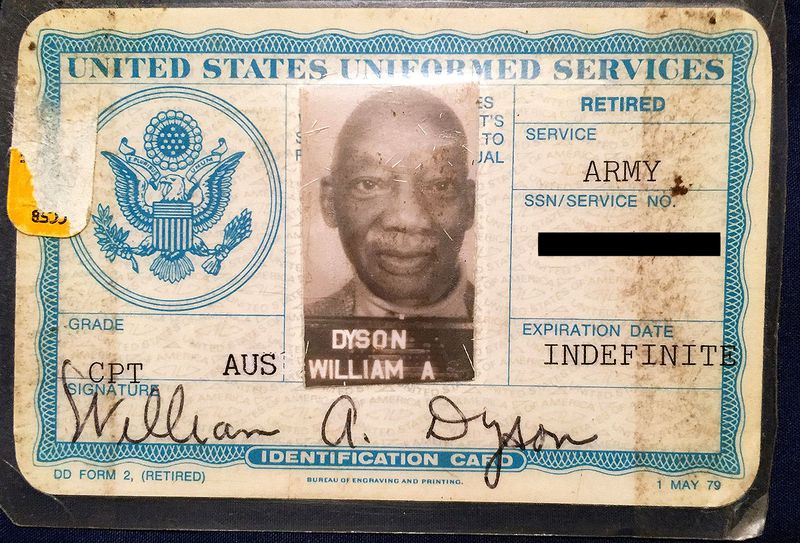
As he rose through the ranks from sergeant major to second lieutenant and colonel, Davis was never put in command of white soldiers. “All of his duty assignments were designed to avoid a situation in which Davis might be put in command of white troops or officers,” according to the Encyclopedia Britannica.
After his promotion to brigadier general, Davis battled the Army’s racial issues.
According to “World War in Europe: An Encyclopedia,” edited by David T. Zabecki, one of Davis’ WWII duties was to examine the “severe problems” of racial segregation in the wartime army and advise U.S. military leaders. “Davis worked to change the leadership climate within the segregated black units,” according to the book. “He conducted tours of Army posts, investigating racial incidents and defusing these problems.”
He also followed the trials and tribulations of black troops, aided in the production and promotion of “The Negro Soldier” training film, and hand-picked black candidates for one of the Army’s great experiments — an all-black officers’ training school.
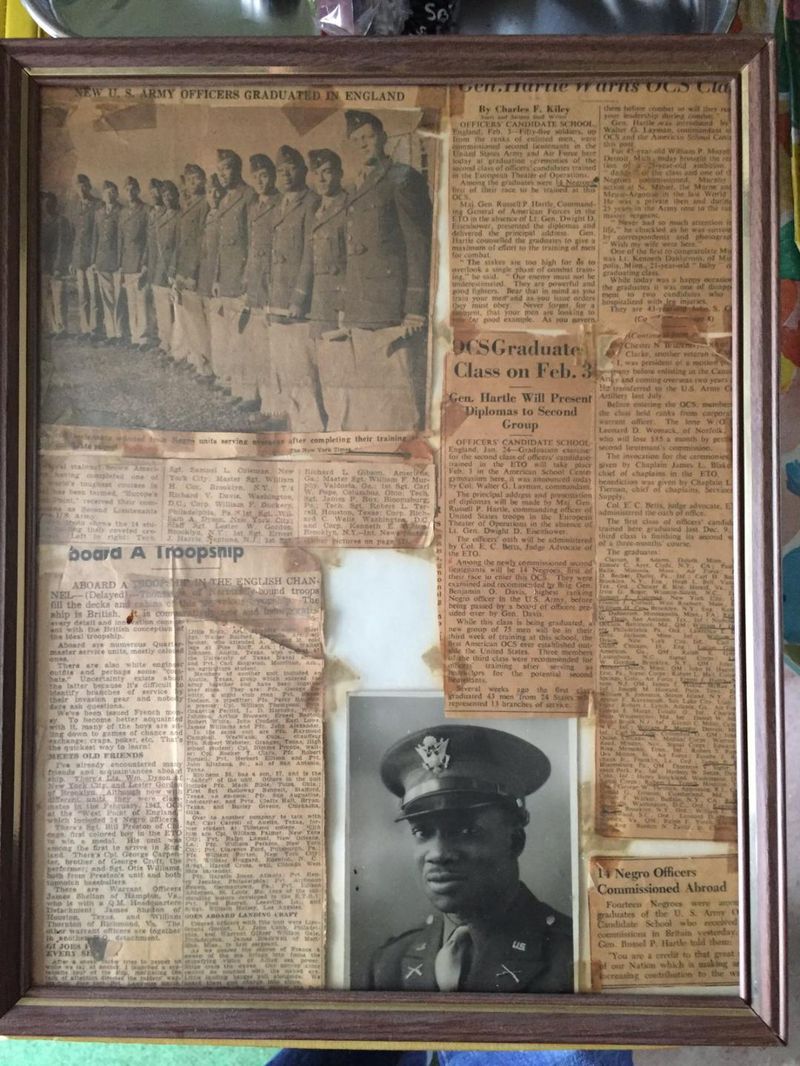
After visiting the Europe during WWII at the request of commanding Army Gen. Dwight Eisenhower, Davis proposed solutions that included black American history education for all U.S. soldiers, and “increasing the number of black officers by selecting qualified individuals for Officer Candidate School.”
According to Army Center of Military History, Officer Candidate Schools were established in 1942 to address the procurement, training and retention of military personnel in the U.S. and England.
Dyson, as a member of the segregated Negro Officers Commissioned Abroad military unit, graduated from an Officer Candidate School set up in England in 1943 — the first-OCS established outside the U.S. He graduated with the rank of second lieutenant, and attained captain status by the end of his active-duty career.
“He was a by-the-books soldier. He was a kind man — always a gentleman,” Lewis said of his grandfather, who died in 1983 at 78, leaving legacy for future black military officers — and his family.
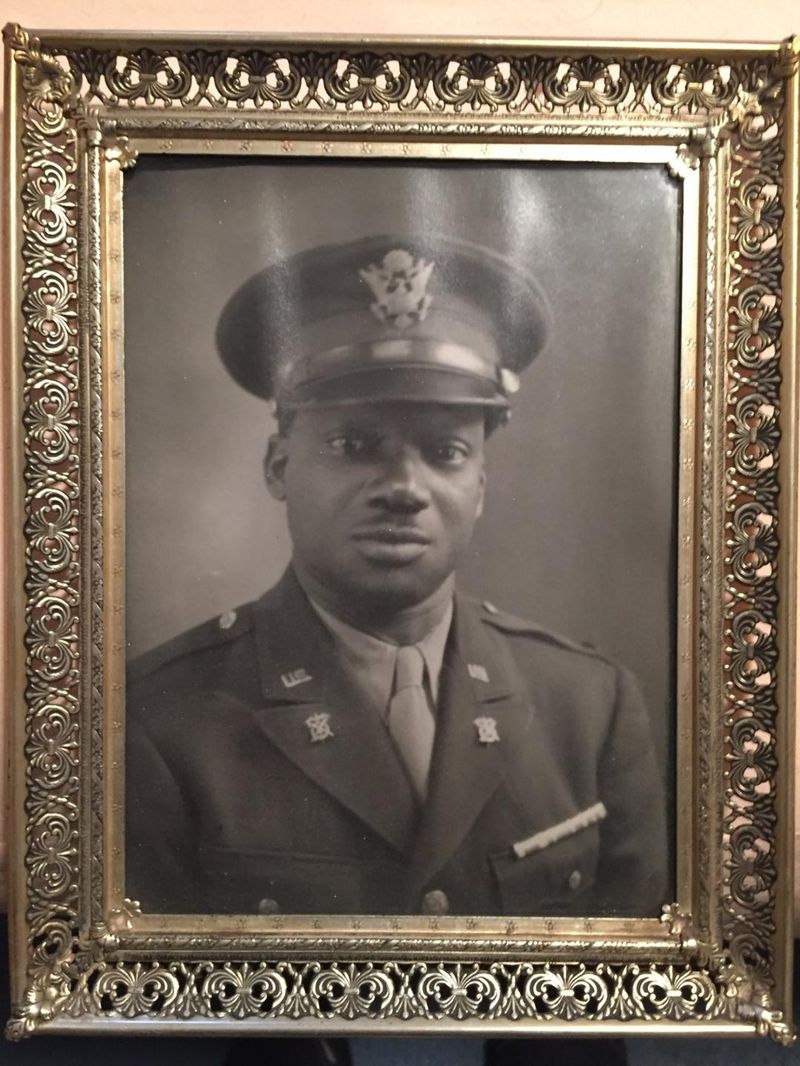
“My father instilled in me the correct way to do things, always being punctual. He was always prompt in what he did; nothing was done haphazardly,” recalled William A. Dyson 2nd, the late captain’s son. “He encouraged me and steered me into the military because it was an honorable career.” William Dyson served in Army and later became a New York City Transit police officer.
Francis Gittens-Lewis, the senior Dyson’s daughter and Reggie’s mother, agreed with her brother about how their father shaped their lives. “He was a silent giant — a beautiful person,” she said. “He and my mother had a beautiful relationship.”
His grandfather’s military experience lives on, says Reggie Lewis, who learned to be prepared and how to properly pack a truck from his granddad.
When preparing for family trips, Lewis uses using the efficient, space-saving military-roll technique.
“When we go away on trips, nobody packs the trunk but me,” he said. “I watched my grandfather do it, and I still do a military roll to this day.”
- Location: New York Daily News
- Year Of Complited: FEB 09, 2017
African Free Schools
The New York African Free Schools were a success, but some of its problems still face black education today
The Declaration of Independence was just 11 years old, and America was a very new nation, when the African Free School system was founded in New York City to provide education during slavery and attempt to validate the Declaration’s treasured tenet that “all men are created equal.”
The New York Manumission Society — a group of prominent and wealthy New Yorkers, including Founding Fathers John Jay and Alexander Hamilton — founded the African Free School in 1787.
The first dedicated building for the educational institution was purchased in 1796. It was on Cliff St. in lower Manhattan, just south of where City Hall and the Brooklyn Bridge stand today, according to the New-York Historical Society’s “Examination Days: The New York African Free School Collection” digital exhibition. The structure held a one-room schoolhouse where the children of enslaved Africans and some free blacks were educated.
The African Free School system operated before abolition in New York State in 1827. The new nation benefited from and grew due to the profitable institution of slavery. Ironically, some members of the New York Manumission Society — founded in 1785 to promote abolition — owned slaves, including President and co-founder Jay.
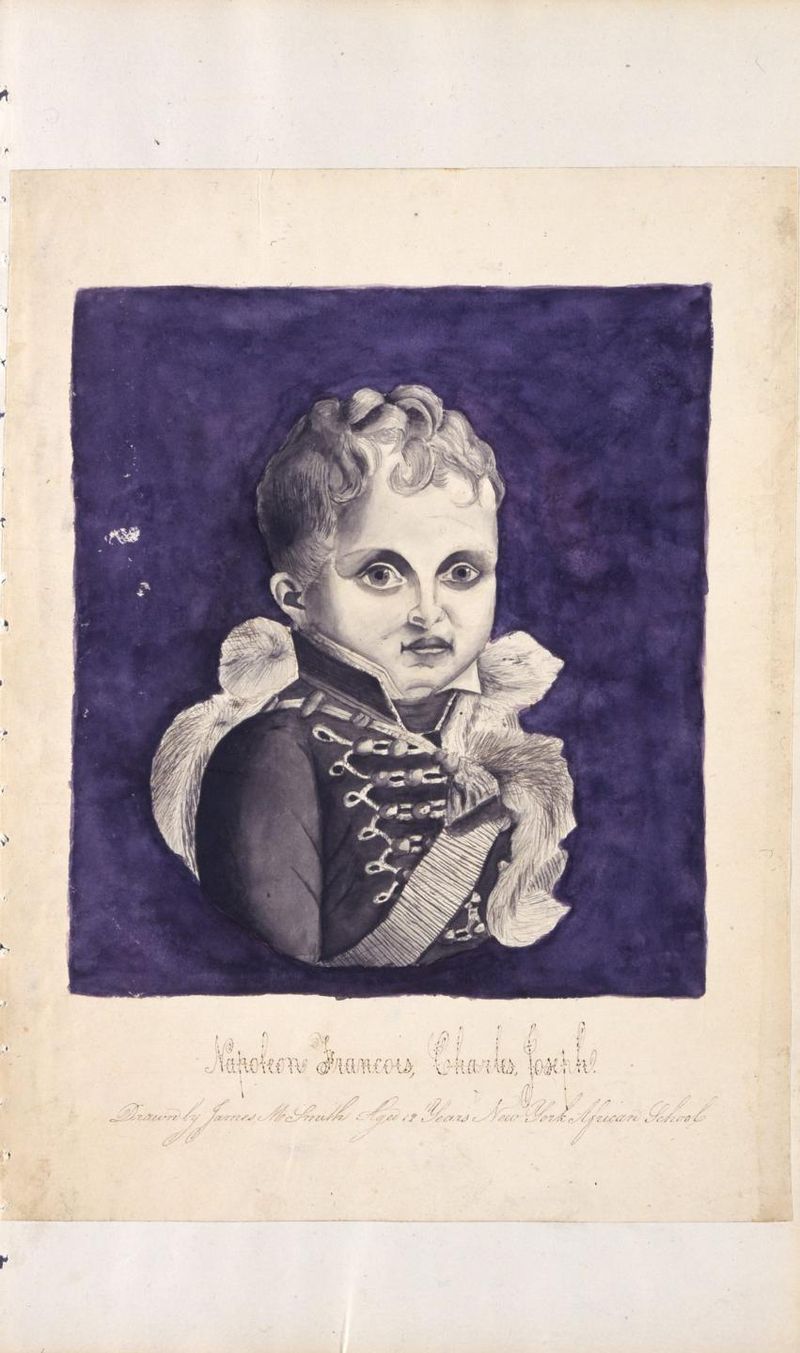
“The New York African Free Schools were a success story in many respects, but also reveal many of the problems facing black education today,” said Rury, a University of Kansas professor who co-wrote “The New York African Free School, 1827-1836: Conflict over Community Control of Black Education” with Prof. Derrick Darby.
“Eventually the schools fell into disrepair, neglected by the newly formed New York Board of Education. Segregation and neglect continue to plague African-American children’s education. Racism is the root of this,” Rury said. He added that “disproportional disciplinary actions against African-American students and problems in assigning black students to special education” continue to undermine many black students’ education.
But looking ahead, Diane Ravitch — a professor and historian at New York University and author of the book, “Reign of Error: The Hoax of the Privatization Movement and the Danger to America’s Public Schools” — offered several solutions to meet the needs of students and their families, as well as education professionals seeking to overcome barriers linked to racism.
Ravitch said that smaller classes taught by highly skilled, experienced teachers; access to health clinics and social services, and providing early-childhood education along with arts, recreation and physical education are solutions to the educational impasse, and would improve education of the city’s African-American students.
- Location: New York Daily News
- Year Of Complited: FEB 09, 2017
Competitor Analysis
European languages are members of the same family. The languages only differ in their grammar, their pronunciation and their most common words. pronunciation and more common words. If several languages coalesce, the grammar of the resulting.
Languages realizes why a new common language would be desirable: one could refuse to pay expensive translators. To achieve this, it would be necessary to have uniform grammar, pronunciation and more common words. If several languages coalesce, the grammar of the resulting.
Leverage agile frameworks to provide a robust synopsis for high level overviews. Iterative approaches to corporate strategy foster collaborative thinking to further the overall value proposition. Organically grow the holistic world view of disruptive innovation via workplace diversity and empowerment.

- client: Kers
- Location: Usa
- Surface Area: Skermset
- Architect: Istiak
- Year Of Complited: 2018
- Project Value: 50k
Analytic Solutions
European languages are members of the same family. The languages only differ in their grammar, their pronunciation and their most common words. pronunciation and more common words. If several languages coalesce, the grammar of the resulting.
Languages realizes why a new common language would be desirable: one could refuse to pay expensive translators. To achieve this, it would be necessary to have uniform grammar, pronunciation and more common words. If several languages coalesce, the grammar of the resulting.
Leverage agile frameworks to provide a robust synopsis for high level overviews. Iterative approaches to corporate strategy foster collaborative thinking to further the overall value proposition. Organically grow the holistic world view of disruptive innovation via workplace diversity and empowerment.

- client: Kers
- Location: Usa
- Surface Area: Skermset
- Architect: Istiak
- Year Of Complited: 2018
- Project Value: 50k
Keyword Research
European languages are members of the same family. The languages only differ in their grammar, their pronunciation and their most common words. pronunciation and more common words. If several languages coalesce, the grammar of the resulting.
Languages realizes why a new common language would be desirable: one could refuse to pay expensive translators. To achieve this, it would be necessary to have uniform grammar, pronunciation and more common words. If several languages coalesce, the grammar of the resulting.
Leverage agile frameworks to provide a robust synopsis for high level overviews. Iterative approaches to corporate strategy foster collaborative thinking to further the overall value proposition. Organically grow the holistic world view of disruptive innovation via workplace diversity and empowerment.

- client: Kers
- Location: Usa
- Surface Area: Skermset
- Architect: Istiak
- Year Of Complited: 2018
- Project Value: 50k

